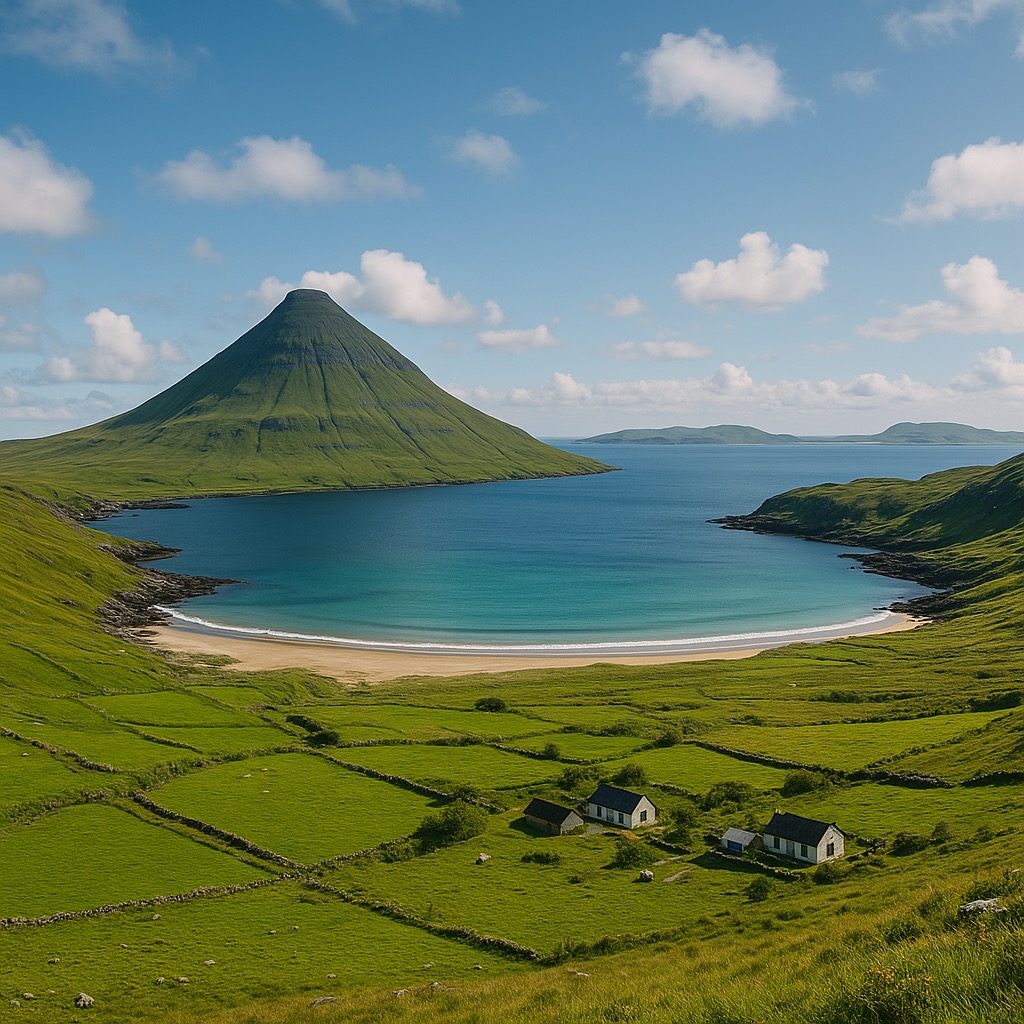
Isle of Eigg, Scotland: A Community-Owned Island Leading in Renewable Energy and Sustainable Living
Nestled in Scotland’s Inner Hebrides, the Isle of Eigg offers a rare mix of rugged beauty and forward-thinking community spirit. This small island, just five miles long and three miles wide, is fully owned and managed by its residents. That community ownership drives a strong commitment to sustainable living and renewable energy, making Eigg a standout example of eco-friendly island life.
Visitors find more than just stunning landscapes here. From white sandy beaches to birdwatching in rich nature reserves, Eigg combines its natural charm with a cultural story rooted in tradition and innovation. Its reputation for sustainability and a shared approach to island life draws travelers interested in green tourism and meaningful experiences beyond the usual.
History and Community Ownership of the Isle of Eigg
The Isle of Eigg’s story is not just about stunning landscapes and wildlife but also about how its residents took control of their destiny. The shift from private ownership to community ownership in 1997 reshaped the island’s future. It empowered the locals to protect their heritage, make decisions together, and develop sustainable practices suited to their needs. This change didn’t happen overnight; it was the result of years of effort, determination, and collaboration.
The 1997 Community Buyout
In 1997, the Isle of Eigg officially changed hands—from private landlords to the people who live there, through what is now known as the Isle of Eigg Heritage Trust (IEHT). This community buyout was groundbreaking because it gave the islanders full ownership and control for the first time in centuries.
The process started with strong local activism and a clear vision: the community wanted to manage its own land and resources. Key figures included islanders and supporters like Tom Forsyth, who pushed the campaign forward for six years. They raised around £1.6 million through various sources:
- Grants from organizations such as the National Lottery and community funds
- Support from charities focused on rural and community development
- Contributions from residents and supporters who believed in the community’s future
This collaborative funding approach made the buyout possible and set a model for other islands and rural places in Scotland. Since then, the community trust has not only managed the land but also shaped local governance, allowing islanders to decide on everything from housing to environmental protection.
The buyout gave Eigg a stronger voice in its own affairs, helping develop housing projects, manage natural resources responsibly, and improve infrastructure. More than that, it has kept the island vibrant and connected to its roots while embracing new challenges.
For more about this historic event, you can explore the official page on the Community Buyout and a detailed BBC feature on Eigg’s 25th anniversary as a community-owned island.
Cultural Heritage and Traditions
On Eigg, tradition and modern life walk hand in hand. The islanders maintain deep respect for their cultural heritage, especially through crofting—small-scale farming that has shaped rural life here for generations. This form of land use reflects a connection to the land, emphasizing sustainability and self-reliance.
Local customs like music, storytelling, and seasonal festivals remain central to Eigg’s identity. These customs not only celebrate the past but also bring the community together in shared experiences that strengthen bonds.
What makes Eigg special is how it balances preserving these traditions while responding to new opportunities and technologies. Residents have embraced renewable energy and eco-friendly living but continue with crofting and Gaelic cultural practices. Education programs and local events help younger generations understand their heritage clearly and proudly.
This mix of honoring tradition and innovating creates a lively community capable of facing modern challenges without losing its soul. Island initiatives often combine cultural heritage with sustainability, ensuring Eigg’s unique way of life thrives into the future.
Learn more about Eigg’s vibrant history and culture by visiting the island’s official heritage section and the Small Isles Heritage & Culture blog.
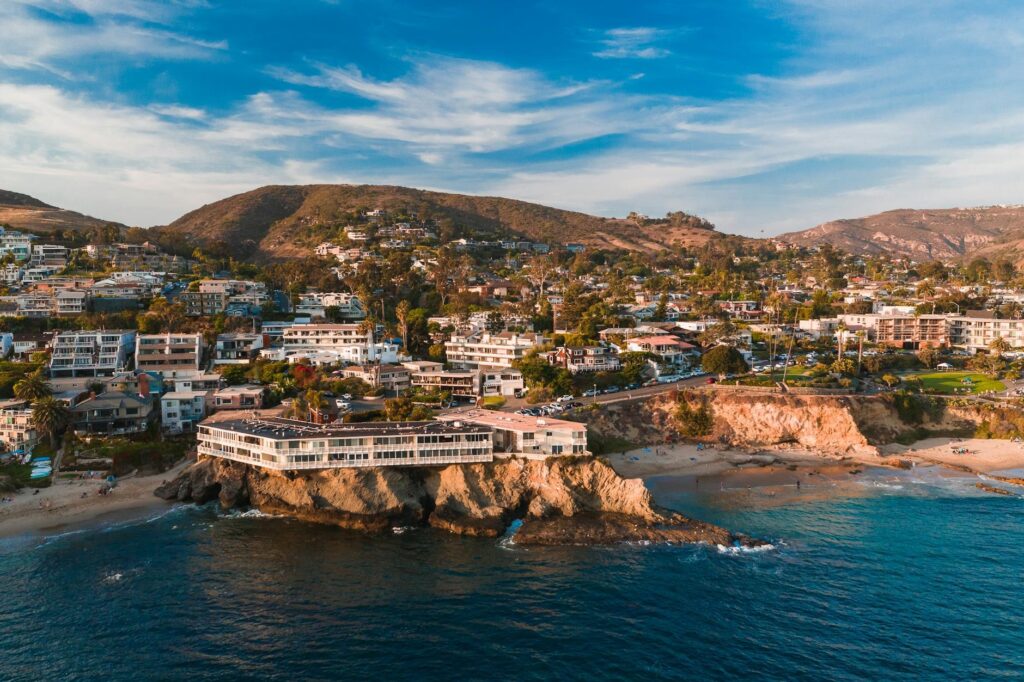
Photo by RDNE Stock project
Renewable Energy and Sustainable Infrastructure
The Isle of Eigg stands out as a beacon of community-driven renewable energy and sustainable living. This small Scottish island has created a reliable, mostly self-sufficient energy system that dramatically reduces reliance on fossil fuels. By combining wind, water, and solar power, the island delivers clean electricity to homes and businesses, showing what can be done with smart local effort and the right technology. Let’s look into the details of how this energy system works and what plans the island has for an even greener future.
Community-Led Renewable Energy Systems
Eigg produces up to 90% of its electricity from renewables, thanks to a finely balanced mix of wind turbines, solar panels, and hydroelectric generators. The community-owned energy network is off-grid, meaning it operates independently from the mainland power supply.
The specifics:
- Wind power: Four wind turbines form a 24 kW wind farm, helping capture the island’s steady breezes.
- Solar panels: A 9.9 kWp solar photovoltaic system turns sunlight into clean energy during the longer daylight hours.
- Hydroelectric power: Three small hydroelectric stations provide a combined capacity of around 120 kW by using water from island streams to generate power.
These energy sources feed into a high-voltage underground grid that links the island’s homes and businesses. This system maintains a steady supply without depending on noisy, polluting diesel generators, which are still available but only used occasionally as backup. The community carefully monitors and balances energy use to make the most of this hybrid setup.
Eigg’s approach is not just about technology but also about community involvement. Islanders actively participate in managing and maintaining this system, fostering a strong sense of ownership and responsibility. This model has attracted global attention for its practical demonstration of what renewable energy can achieve on a small scale. For more insight on how Eigg’s system operates, check out the BBC feature on the island’s electricity system.
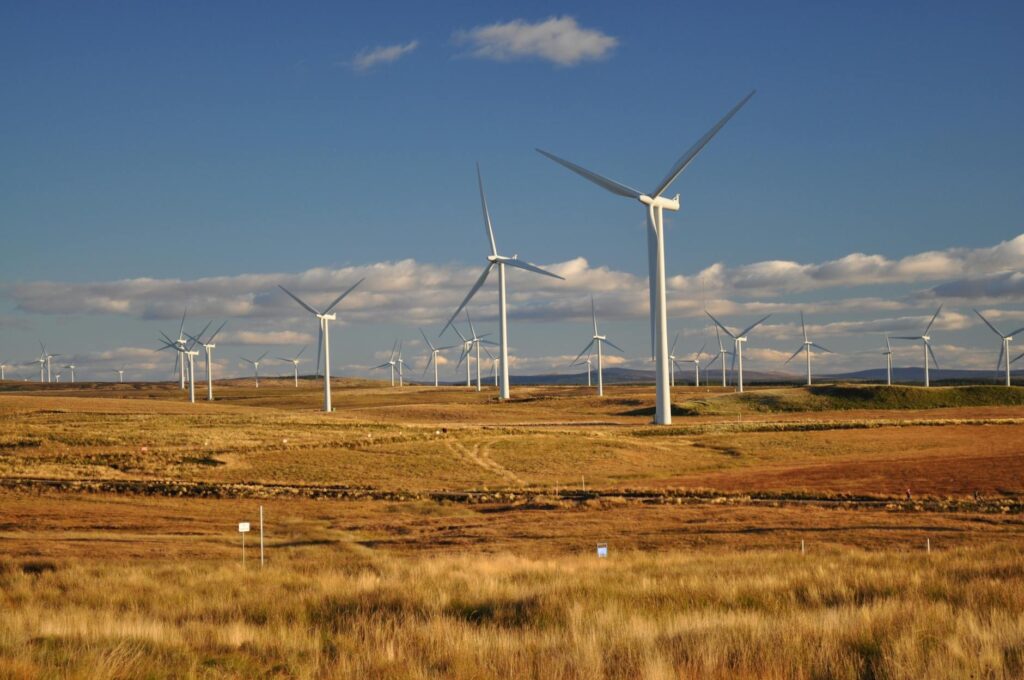
Photo by Peechie247
Future Sustainability Initiatives
Eigg’s sustainability journey is far from over. The island community has ambitious goals, looking to expand green energy capacity and reduce carbon emissions even further, aiming for full carbon neutrality by 2030.
Key plans include:
- Additional wind turbines: To boost wind energy generation beyond the current 24 kW capacity.
- Air source heat pumps: Introducing these will help replace fossil fuel-based heating systems with highly efficient, renewable heating methods.
- Enhanced energy storage: Further development of battery storage to better handle fluctuations in renewable output and ensure a steady supply day and night.
These changes will help the island lessen reliance on backup fossil fuel generators and cut its carbon footprint. The push toward carbon neutrality reflects a broader vision of ecological responsibility that the islanders have embraced—not just for energy, but across all aspects of island life.
Eigg’s sustainability initiatives offer a strong example for other small communities worldwide, proving that thoughtful investments and community collaboration can drive meaningful change. More about these future goals is detailed at Powering the Future Naturally on the Isle of Eigg.
Through these efforts, Eigg is not just a place to visit but a working example of how sustainable energy and infrastructure can support a vibrant, modern community while protecting the environment.
Natural Attractions and Outdoor Activities
The Isle of Eigg is a place where nature’s drama unfolds in every direction. From its sharp volcanic peaks to serene beaches, and from thriving wildlife reserves to easy-to-explore trails, Eigg draws you into a world full of fresh air and stunning views. Whether you crave adventure or just a peaceful nature escape, this island offers a variety of outdoor highlights worth exploring.
An Sgùrr Ridge and Geological Features
Rising sharply above the island is An Sgùrr, Eigg’s most iconic landmark. This ridge is a jagged remnant of volcanic activity dating back around 59 million years. Imagine the island as a giant ancient volcano whose fiery heart cooled into this dramatic ridge of black pitchstone, a rare volcanic glass that’s unusually tough and glossy.
Climbing An Sgùrr isn’t just a hike; it’s stepping onto a natural monument shaped by deep time and volcanic fire. From its summit, you’re treated to panoramic views where the Small Isles spill out into the Atlantic, with glimpses of Skye and the Ardnamurchan peninsula. The ridge’s unique geology tells the story of one of Scotland’s youngest volcanic landscapes and offers a glimpse into Earth’s ancient past.
For those interested in geology or just wanting a rewarding climb, the Sgùrr Pitchstone Formation is a gem that blends striking formations with breathtaking scenery. Exploring this ridge gives you a touch of wildness combined with a window through millions of years of natural history. You can find details about the ridge and hiking here on the excellent Walk Highlands An Sgùrr page.
Wildlife and Nature Reserves
Eigg’s wild heart beats strongest in its extensive nature reserves and rich biodiversity. The island hosts over 200 species of birds, including the majestic golden eagle that soars high above the hills. It’s a prime spot for birdwatchers because aside from eagles, you might spot peregrine falcons, sea eagles, and various seabirds nesting on cliffs.
The island is also home to three protected nature reserves, recognized as Sites of Special Scientific Interest (SSSIs), which preserve delicate habitats for plants and animals. These reserves support a variety of species from butterflies and dragonflies to seals along the rugged coastline. Conservation efforts on Eigg focus on maintaining this rich biodiversity while allowing visitors to enjoy these natural treasures responsibly.
Walking through these nature reserves, you might catch glimpses of croftland wildlife and hear the call of wild birds in the forests and moors. The local community actively supports these conservation projects to protect Eigg’s unique ecosystems. Learn more about the island’s vibrant wildlife and conservation at the Isle of Eigg Wildlife & Biodiversity page.
Outdoor Recreational Activities
Outdoor lovers will find plenty to fill their days here. The island’s compact size makes it perfect for exploring on foot, by kayak, or even cycling.
- Hiking: Besides An Sgùrr’s challenging climb, there are gentle trails for all levels. Stroll along white sandy beaches like the famous Singing Sands, or wander through quiet forests and moorlands. Each path offers a new angle on Eigg’s stunning landscape.
- Kayaking: The calm waters around Eigg provide excellent conditions for kayaking. Paddling along the coastline reveals hidden coves, sea caves, and chances to spot seals and dolphins. Kayak rentals and guided tours are available from local operators such as Eigg Adventures.
- Beach Visits: The island has several beaches known for their beauty and tranquility, with soft sands and clear waters perfect for relaxing or exploring the shoreline.
- Wildlife Tours: Guided wildlife tours help visitors spot and learn about Eigg’s diverse animal life. These tours are offered by local experts who know the best spots to find rare birds and other animals, making wildlife watching accessible and enjoyable.
No matter your interest, Eigg’s natural attractions and outdoor options invite you to slow down and connect with nature in a way few places can match. The island’s blend of rugged volcanic landforms, rich habitats, and outdoor fun delivers a memorable experience every time.
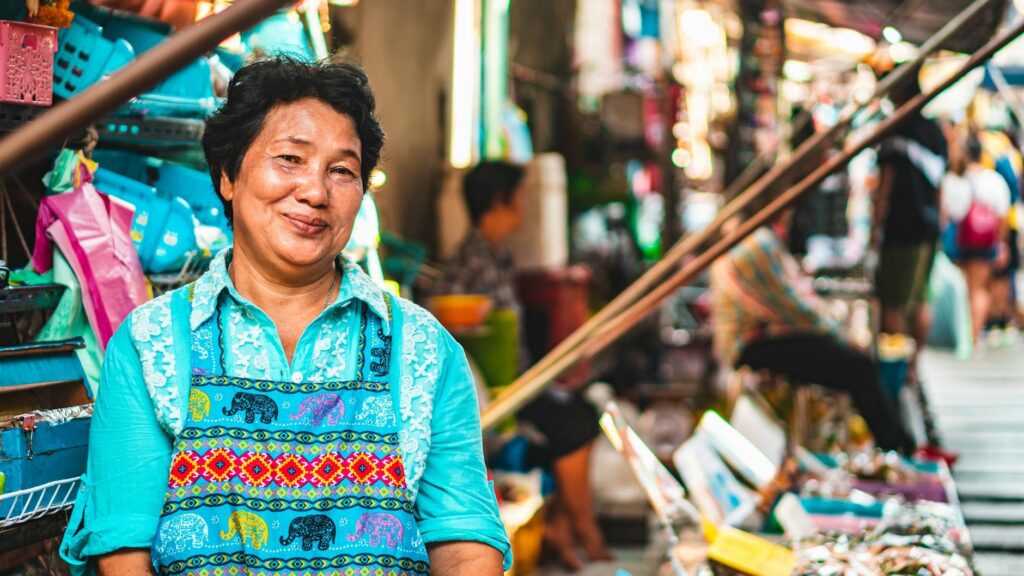
Photo by Lina Kivaka
Local Economy, Accommodations, and Community Life
The Isle of Eigg is much more than its spectacular natural beauty. The island thrives on a blend of tourism, agriculture, and local businesses—all rooted deeply in community values. Here, economic ventures, accommodations, and cultural life reflect a shared commitment to sustainability and a connection to the land and sea. This section explores how tourism infrastructure supports visitors, the role of crofting and enterprises like the local brewery, and how community events keep island life vibrant and welcoming.
Tourism Infrastructure and Accommodations
Eigg’s tourism scene is designed to be low-impact yet inviting, giving travelers a chance to enjoy island life without overwhelming it. Many accommodation options are community-run, aiming to keep profits cycling back into the island’s upkeep and services.
Several options cater to different tastes but all embrace Eigg’s simplicity and natural surroundings:
- Camping pods: These cozy pods sleep up to four people and offer comfortable warmth and shelter while letting you stay close to nature. Set with views of the harbour, they provide a unique way to experience the island without the hassle of heavy gear. You can learn more about these pods at the Eigg Camping Pods website.
- Eco-lodges and self-catering cottages: These provide environmentally friendly stays, often built with local materials and designed to blend into the landscape. They use renewable energy and emphasize minimal waste.
- Community hub and café: Located near the harbour, the community hub is a social and visitor centre. It offers information, a warm place to gather, and locally sourced food and drinks. The café in particular lets visitors taste island flavors while supporting local producers.
These accommodations not only offer comfort but also reinforce community values by involving islanders in running and maintaining visitor services. Visitors often appreciate the chance to meet locals and share stories, making their stay more than just a holiday.
Crofting and Local Businesses
Crofting remains a cornerstone of Eigg’s economy and culture. This traditional small-scale farming involves growing crops and raising livestock in a way that supports the land’s health and biodiversity. Crofting on Eigg has evolved to meet modern challenges, focusing on sustainability and self-reliance.
Recent efforts highlight:
- Sustainable land use: Projects aim to balance food production with conservation, ensuring that the island’s soil and habitats remain healthy.
- Support for crofters: New initiatives provide training and resources to help crofters innovate within tradition. This includes diversification into crafts, local food products, and eco-tourism.
- Local entrepreneurship: Beyond crofting, businesses like the Isle of Eigg Brewery have found success by tapping into local resources, such as pure island water, and creating authentic products. This brewery not only attracts visitors but also adds to the community’s economic diversity.
The crofting sector and local businesses offer a window into how Eigg supports livelihoods tied closely to place and sustainability. For a detailed look at recent developments in crofting on Eigg, see the article on Cultivating Change: Crofting on Eigg.
Community Events and Cultural Engagement
Life on Eigg pulses with activity throughout the year. Community events bring islanders and visitors together, providing rich experiences that celebrate local culture and strengthen bonds.
Regular happenings include:
- Annual festivals and fairs: These celebrate everything from traditional music and dance to seasonal crofting achievements, offering fun and learning for all ages.
- Volunteer programs: Visitors can join conservation efforts, help with crofting tasks, or assist in community projects. These opportunities deepen connections to the island while supporting vital work.
- Workshops and educational sessions: Throughout the year, Eigg hosts events focusing on its heritage, crafts, environmental stewardship, and renewable energy.
This active cultural engagement invites visitors to become part of the island’s story, rather than just spectators. It fosters a strong sense of belonging and respect for Eigg’s natural and cultural treasures. For those interested in participating, the community shares updates on events and learning chances through their Learn on Eigg page.
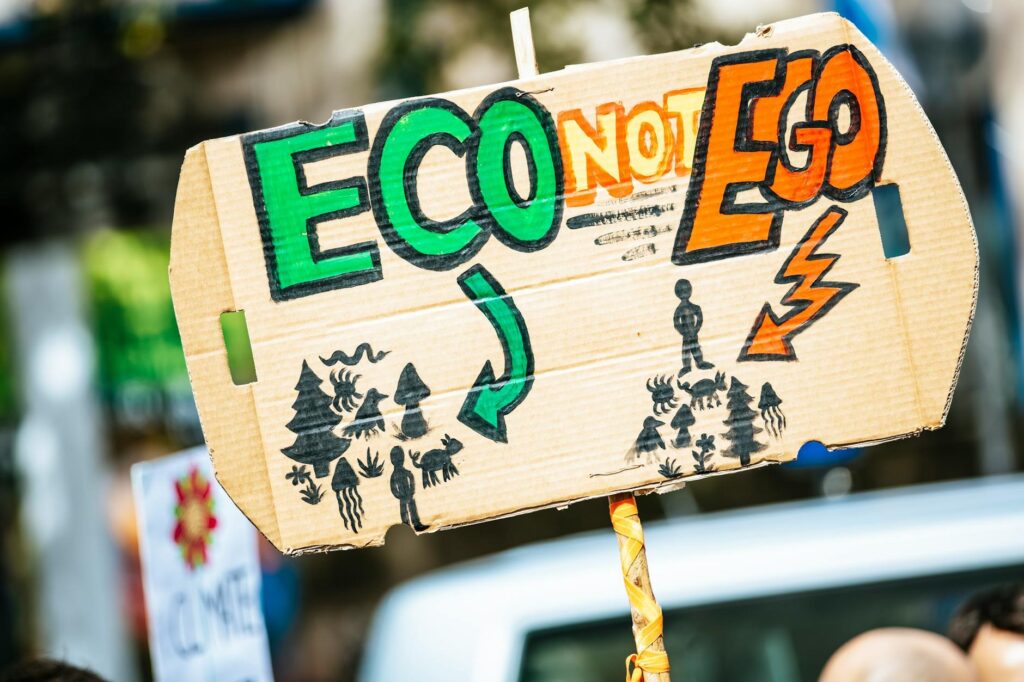
Photo by Chait Goli
Environmental Projects and Conservation Efforts
The Isle of Eigg isn’t just about stunning landscapes and renewable energy—it’s also a living example of caring for nature with real hands-on projects. The island community has taken great responsibility to restore habitats, tackle invasive species, protect native wildlife, and keep its marine and coastal environments healthy. Although small, these efforts are detailed, ongoing, and tied into wider support from national programs and partnerships. Let’s explore the key initiatives that help Eigg maintain its rich biodiversity and natural beauty.
Habitat Restoration and Reforestation
Much of Eigg’s conservation work focuses on reforesting parts of the island with native trees. The island runs a dedicated tree nursery that produces around 20,000 native trees each year. These young trees include species like oak, birch, and rowan—all eager to take root and restore natural woodlands that were once abundant.
This reforestation effort does more than just add greenery—it helps rebuild local ecosystems. Trees stabilize the soil, create homes for birds and insects, and improve water quality by reducing runoff. The return of native woodland also fights erosion and supports other plant growth, building a healthier environment over time.
By growing the trees locally and planting them carefully, from croft lands to common areas, Eigg’s community actively repairs landscapes impacted by past deforestation or overgrazing. This approach shows how small-scale native tree planting can produce big benefits for biodiversity and the island’s long-term natural health.
Invasive Species Management and Biodiversity Conservation
No healthy ecosystem thrives without managing the threats that come from non-native species. On Eigg, Japanese knotweed is one invasive plant that the community tackles with vigilance. This fast-spreading weed can outcompete native plants and disturb habitats, so early detection and removal are crucial. The efforts involve community volunteers working alongside environmental groups to contain and remove knotweed patches.
Protecting native species means more than fighting invasives. Eigg is home to protected wildlife, including otters, seabirds, and rare wildflowers, which benefit from concerted conservation actions. These include habitat monitoring, breeding support, and public awareness campaigns to keep the island’s biodiversity strong.
Many of these projects receive support from national efforts like the Scottish Invasive Species Initiative, which partners with local communities to control invasive plants and animals. These connections enhance Eigg’s ability to maintain its unique wildlife against ongoing challenges.
Marine and Coastal Environmental Initiatives
Eigg’s coastal waters and shorelines are just as important as its land habitats. The community actively takes part in marine conservation and litter reduction efforts. Regular beach clean-ups happen throughout the year, involving residents and visitors who help remove marine debris that can harm wildlife and spoil the natural beauty.
The island also supports projects aligned with Scotland’s National Litter and Flytipping Strategy which focuses on reducing litter at its source. Such programs promote awareness about marine pollution and encourage responsible behaviors among locals and tourists alike.
Preserving Eigg’s coastal habitats ensures safe breeding grounds for seabirds and healthy waters for marine species like seals and fish. The island’s Environmental Action Group plays a key role in raising awareness, organizing events, and opposing developments that could harm marine life, showing that active stewardship extends from the hills right to the shoreline.
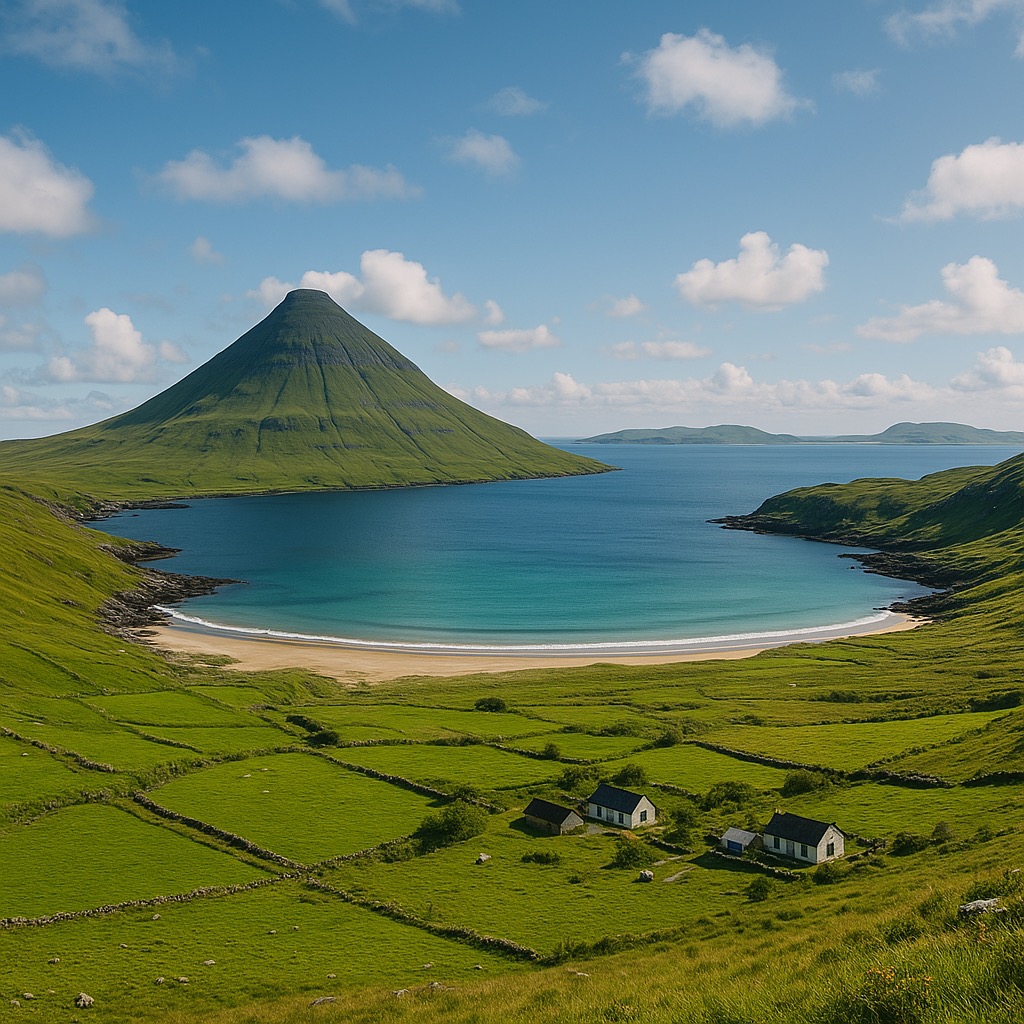
Photo by Markus Spiske
Together, these efforts highlight how the Isle of Eigg combines community spirit with practical conservation work. Backed by national funding programs like the Scottish Government Nature Restoration Fund, Eigg’s approach builds a foundation for a thriving, biodiverse island environment into the future.
Conclusion
The Isle of Eigg is a remarkable example of what a small community can achieve when it takes ownership of its future. Its blend of community-led land management, almost entirely renewable energy, a thriving local economy, and ongoing conservation shows how sustainable living is possible in a remote setting. Eigg’s efforts in housing, energy, and environmental care create a model for responsible tourism that supports both people and nature.
Visitors and communities everywhere can learn from Eigg’s story—the island proves that sustainability goes hand in hand with a strong sense of place and shared purpose. Its journey continues to inspire those looking to build balanced, lasting connections between community, culture, and the environment.
